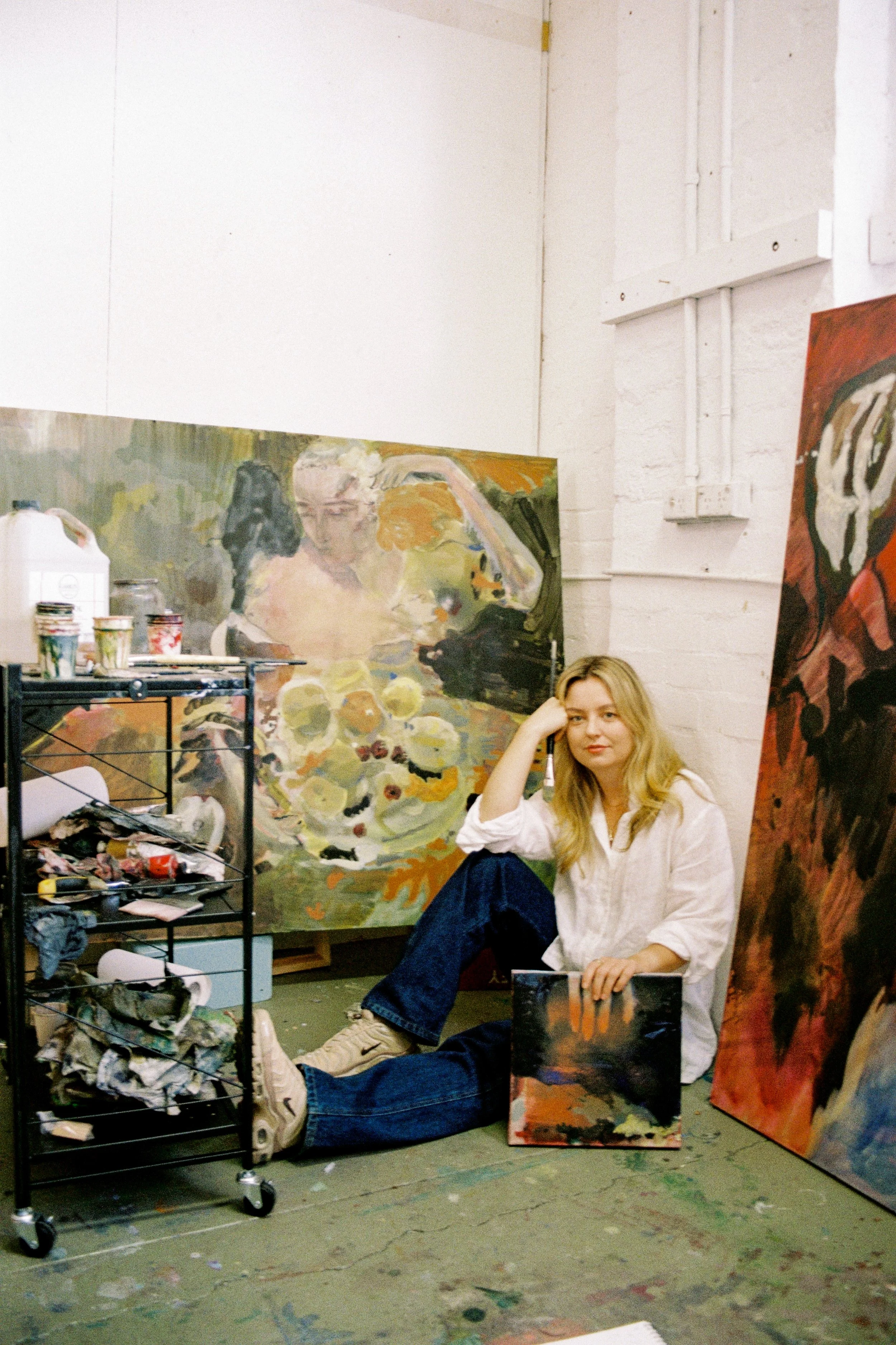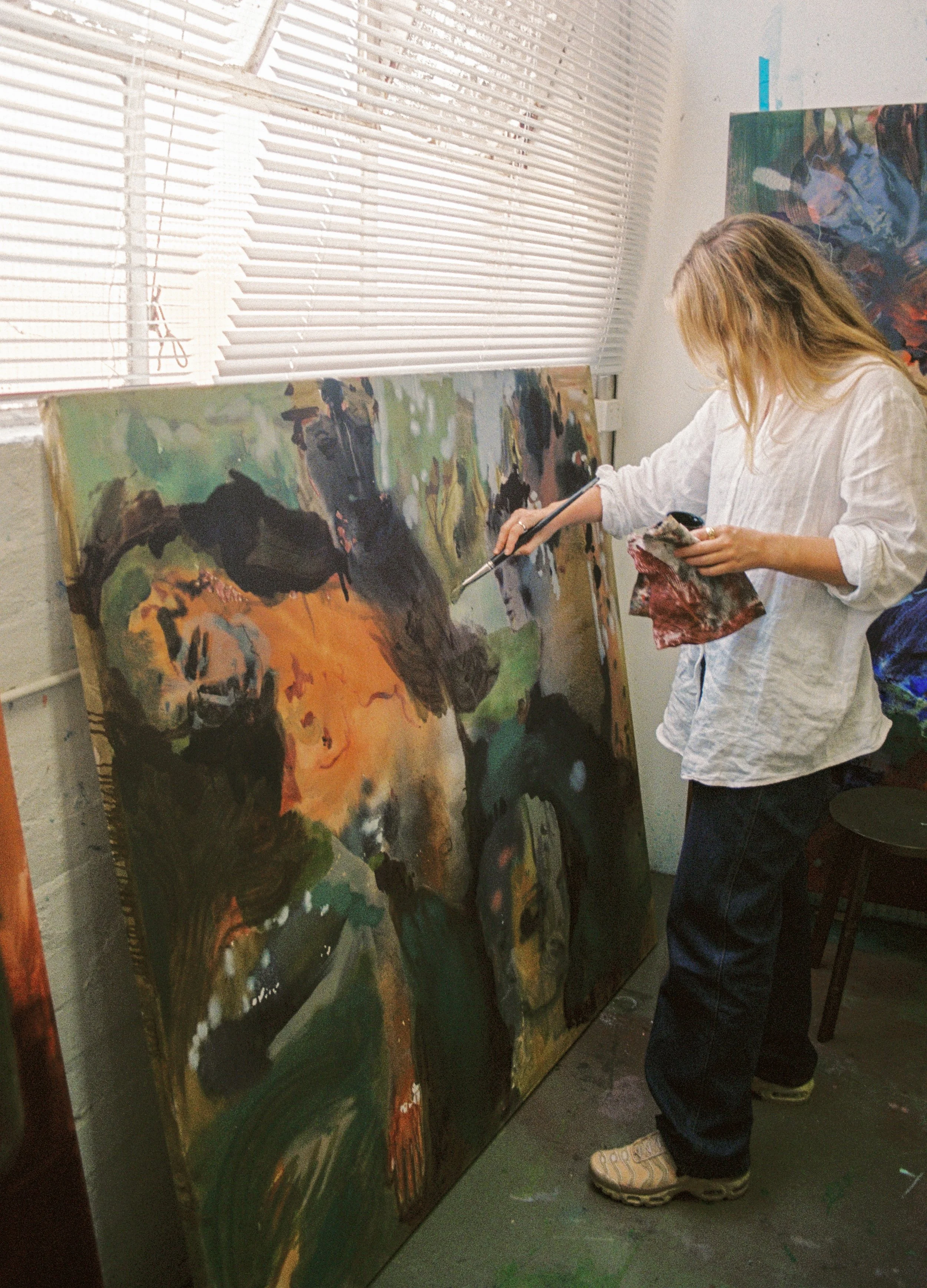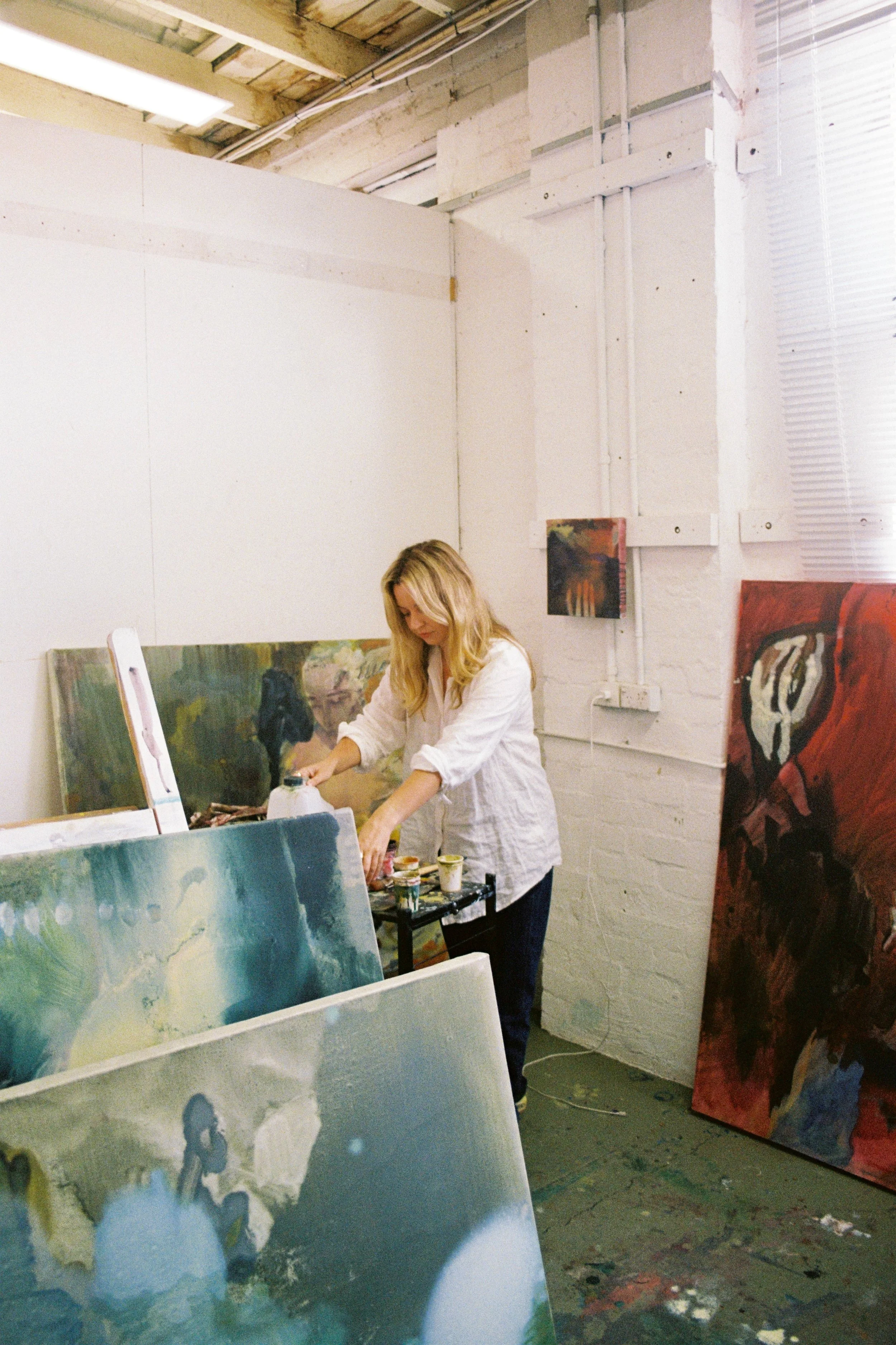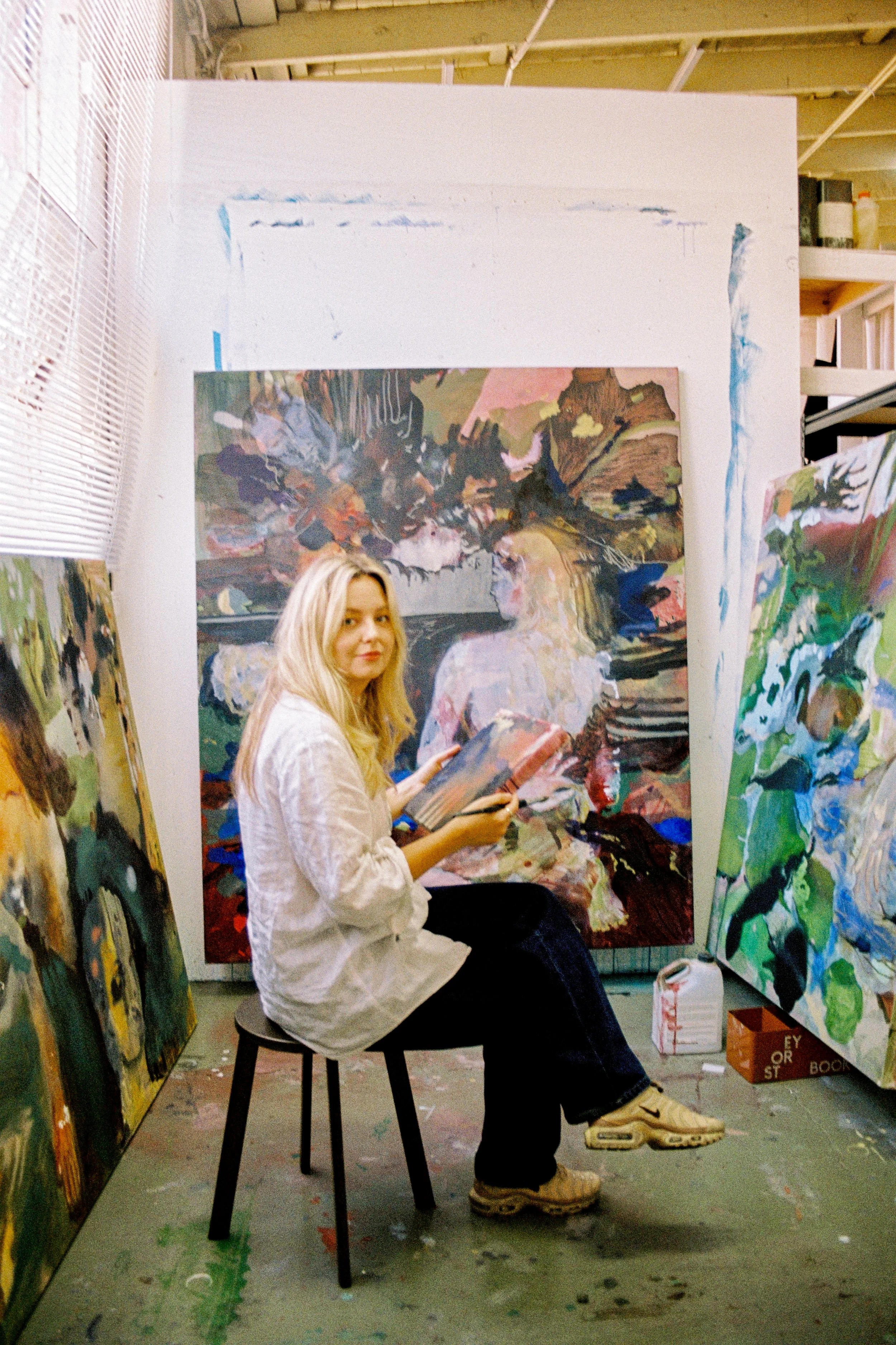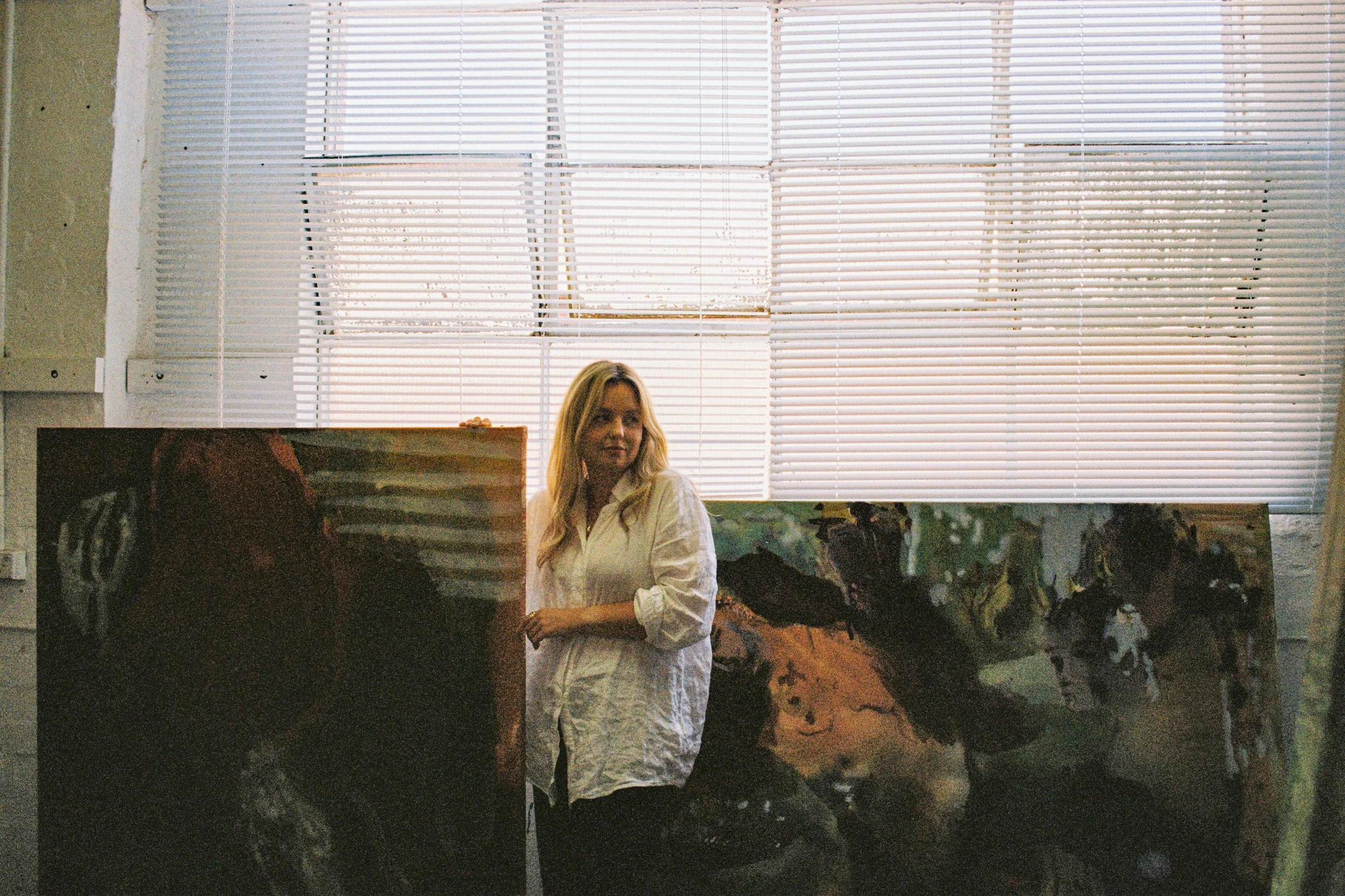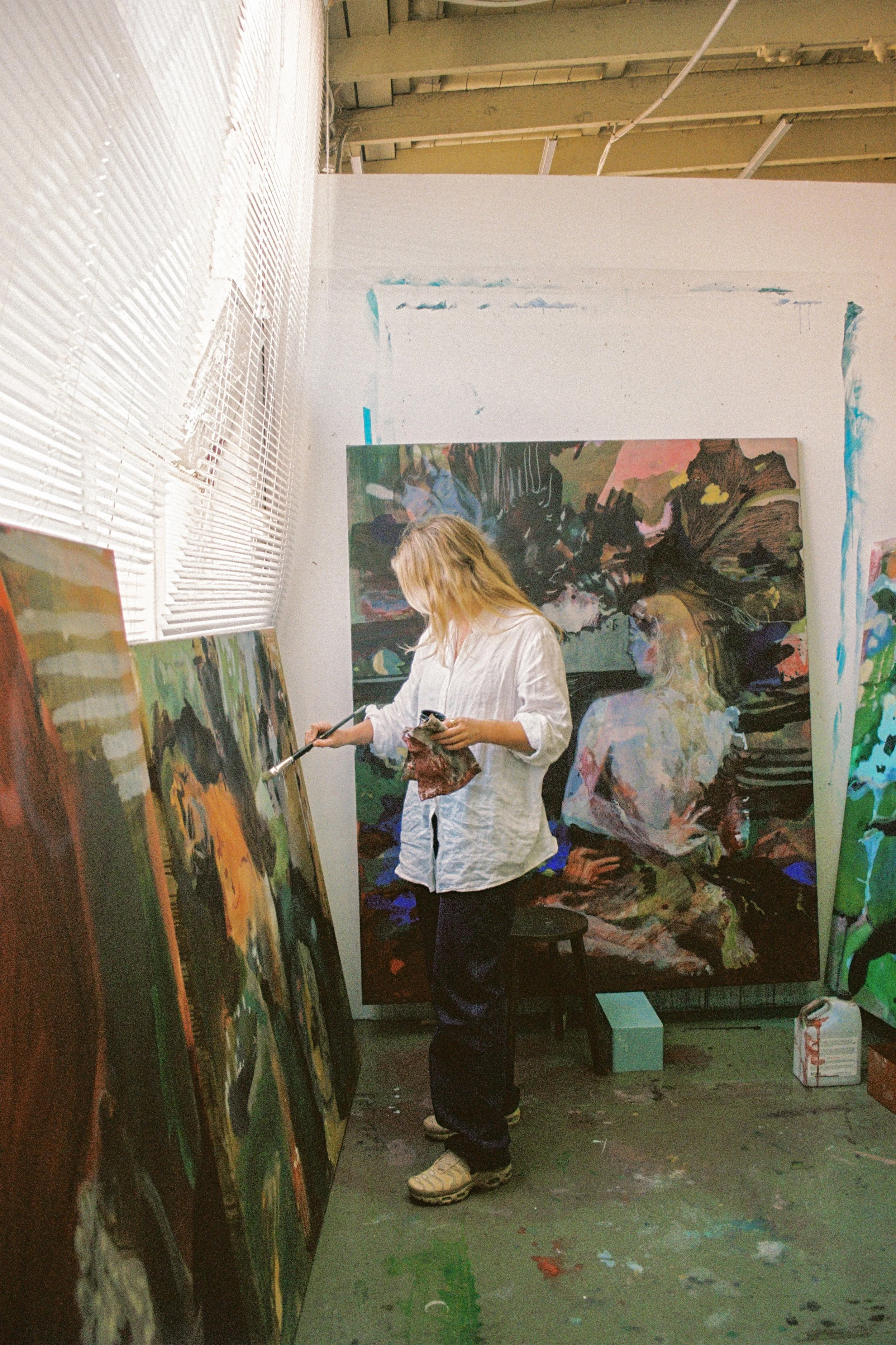Artist Loren Marks
Loren Marks is a renowned artist based between Naarm and Tāmaki Makaurau. Loren’s dream-like abstract works feature figures emerging from layers of fluid paint, employing a technique inspired by Helen Frankenthaler’s "soak-stain." Within each layer, Marks creates ethereal, shifting scenes where colour and form dissolve into one another, inviting viewers into a meditative, otherworldly space.
Loren attracts a wide following from both the art world and the fashion industry, thanks to her background in textile design and artistic collaborations with designers such as Dominique Healy and Juliette Hogan (to name a few).
Within this conversation, Loren shares her early artistic influences, dialogue between the materials and her responses, morning rituals and more.
Where do you call home now, and where did you grow up?
I grew up in West Tāmaki Makaurau. I spent most of my school years in Aotearoa NZ. I currently live in Fitzroy North, Naarm Melbourne, Australia. Having moved here in September last year, I have enjoyed seeing the shifts and influences from a new place apparent in my work.
What inspired you to pursue a career in the arts?
I’ve been drawn to painting and making for as long as I can remember. One of my earliest memories is from kindergarten, I had such a strong desire to make things with anything I could find - paint, paper, wood, or fabric. It was a decision made during high school as I learnt more about different careers.
After studying a Bachelor of Fine Art, I worked as a textile designer in the fashion industry for a few years and then shifted my focus back to my Fine Art practice. It started when I began making paintings again over the first lockdown, I ended up with a body work and I haven't looked back.
I didn’t agree with the idea that you should avoid having your biggest passion as a career to prevent burnout. Transitioning to Art as my main career focus has felt so energising and liberating.
Could you tell us a bit about your art, your process, and the mediums you enjoy working with?
My work is positioned in a space where abstraction and figuration meet. I begin with the initial intention or question I want to investigate, and the materiality of the medium and how it behaves is what drives the work forward; it’s a dialogue between the materials and my response.
I use predominantly oil paint and mediums to make the physicality of the paint change. I also have a regular sketching practice at home which serves as fuel for when I am in the studio.
My process is intuitive, shifting between moments of chance and intentional control. It’s a back-and-forth conversation: the materials suggest something, I respond, often with some sketches to help me work through any compositional ideas, and the cycle continues until the work feels complete.
When the figures reveal themselves to me as the work progresses, I feel like I'm meeting a stranger for the first time and I get more familiar with them as they reveal more of themselves. I reach a point where I feel there is nowhere else to go, there’s nothing more to add or remove, and that is when it is finished.
How was your experience at university, and what were some key artistic influences during your formative years?
I loved my time at university. I started my BFA at Whitecliffe when I was 17, and it was a very pivotal but at times intense experience. My lecturers were brilliant and generous with their knowledge. The things they taught me I may not have understood at the time, but I realise I had stored the knowledge in the background and some things have made more sense as I have developed my practice over the years.
I was drawn to expressionist and figurative painters in the beginning such as Cecily Brown, Laura Owens, Francis Bacon, and Helen Frankenthaler. Some influential artists from Aotearoa for me are Star Gossage and Bill Hammond.
What’s your morning routine like on studio days?
I start my day with a walk to an Ashtanga yoga class near my house, then grab a coffee on the way back. I’m a morning person, so I tackle things like admin tasks and emails early, along with some of my pencil sketches to try and work through some of the unresolved paintings I have in the studio.
We chose where we live as it is so walkable. I have found walking an important aid to my creative work and have noticed a difference since moving here and walking more. Something happens to my brain; it slows me down and I observe visual moments such as a colour, or a certain type of plant when I’m walking to places such as my studio or to the tram. I record it all and it serves as more idea generation and subject matter for my work.
Do you have a favourite playlist or podcast that you listen to while painting?
If I’m feeling flat, I’ll turn to art podcasts like Talking with Painters By Marija Stoljar or put on an eclectic mix of music from my own playlist.
During moments of self-doubt, how do you stay motivated?
I most commonly experience self-doubt when I’m trying to resolve work before a show. When I need inspiration, I’ll flip through books or look at images from my favourite painters. In the beginning, when I first started my practice, it felt counterproductive to stay away from the studio. I have since learnt that taking time away from the studio and my paintings and revisiting them later can be better than forcing myself to work through them. In saying that, sometimes the best thing for me is to just show up at the studio to only look at the work, re-arrange and tidy the space, or stretch some canvas and that can help move things forward.
Can you share 2-3 books that deeply impacted you
Some recent books: A Fine Balance, Rohinton Mistry, The Nickel Boys, Colson Whitehead, Yellowface, Rebecca F Kuang. The Covenant of Water, Abraham Verghese
Could you share a little about your journey so far
An important milestone in my career was being represented by Sanderson Contemporary. Their support has enabled me in many different ways to develop as an artist. Being offered a place in the Master of Contemporary Art Programme at Victoria College of Art, Melbourne University is also a highlight and why I have moved to Naarm. I am also a finalist in the NZPPA awards this year. There are also some exciting projects coming up later in the year.
You mention you were given a place at Victoria College of Art, University of Melbourne, to study in the Master of Contemporary Arts programme. Can you tell us a bit about this programme, when are you going to start and what you are most excited about with the course.
The focus of the course is to develop as an individual, as well as a professional art practice and a deeper understanding of how your practice intersects with contemporary art.
The emphasis in the first year is on experimentation, speculation and engaged dialogue with staff and other students in an on-campus independent studio setting. In the second year, you will identify an area of independent research to investigate via a yearlong studio project, which culminates in an assessment and public exhibition in the annual Masters exhibition.
I was thrilled to be offered a place in this programme. The University of Melbourne is Australia’s top-ranked university and is recognized globally, ranked 13th in the world.
I wanted to be in an environment to refine my practice, take risks, deepen my conceptual and philosophical understanding of my work, and develop work alongside peers and lecturers who will help critique my work. It is a two-year course beginning in March and I’m excited to see how it challenges and expands my work in new ways.
Photography (supplied) Emma Hardy @hardyimages

